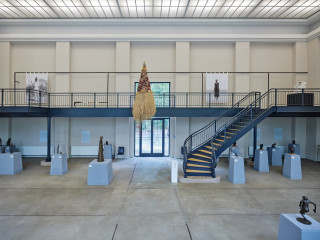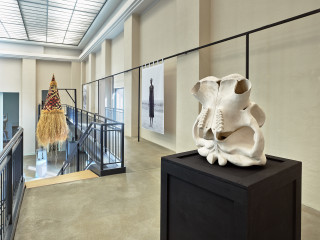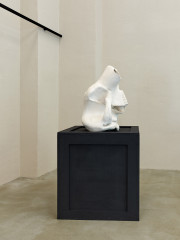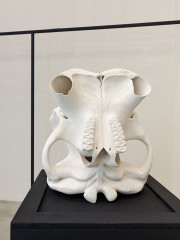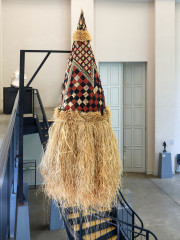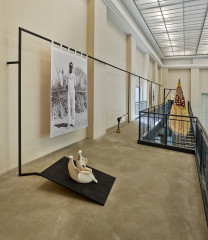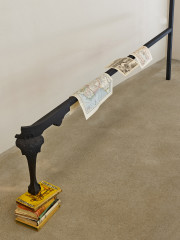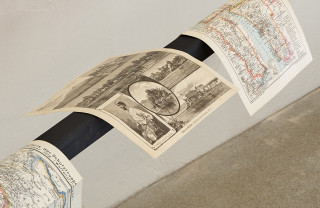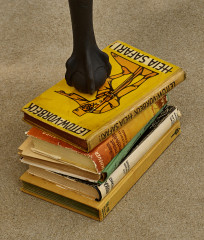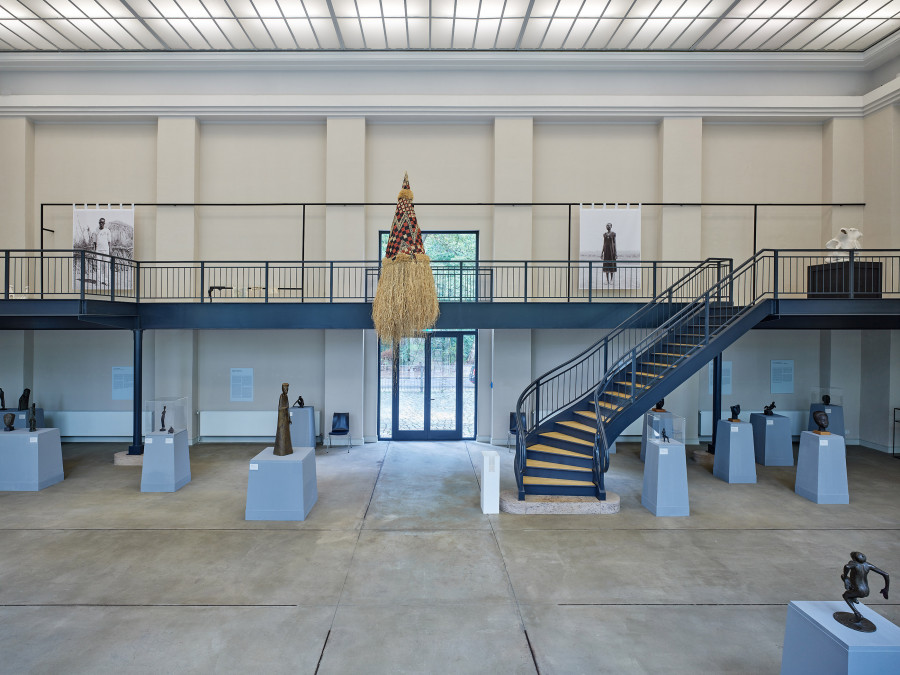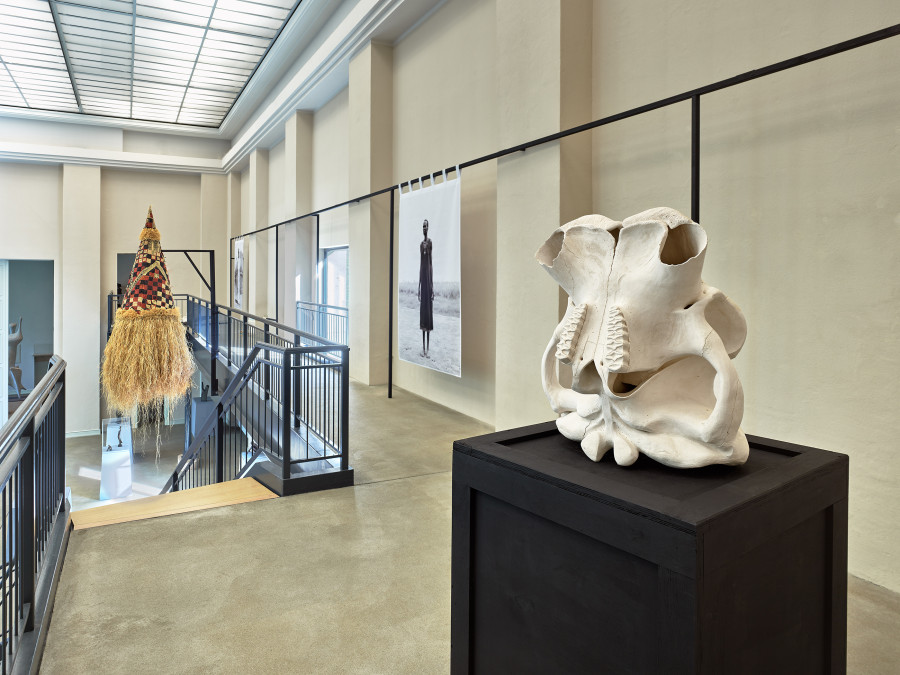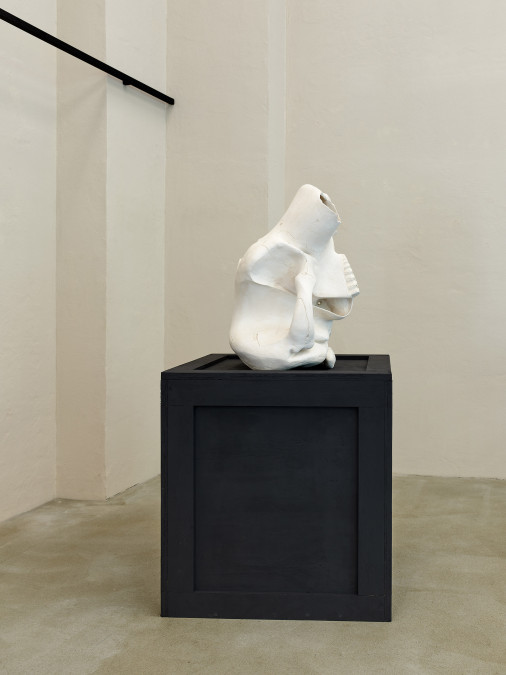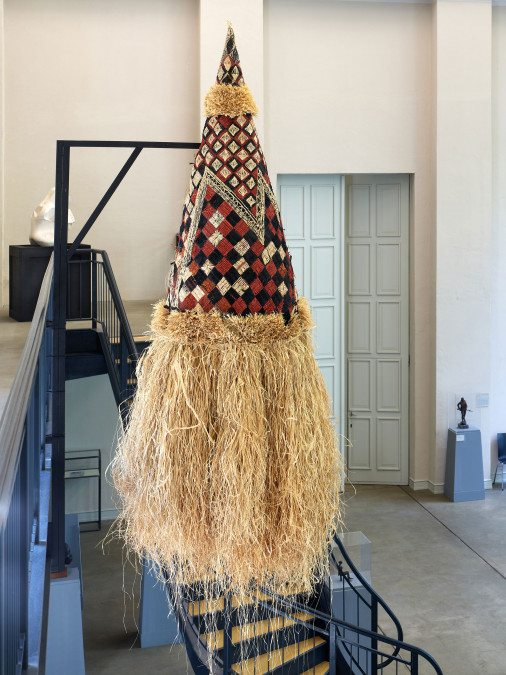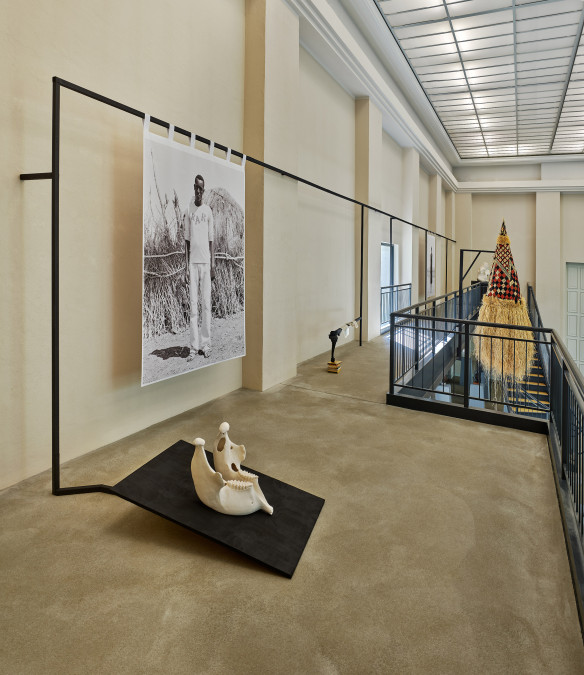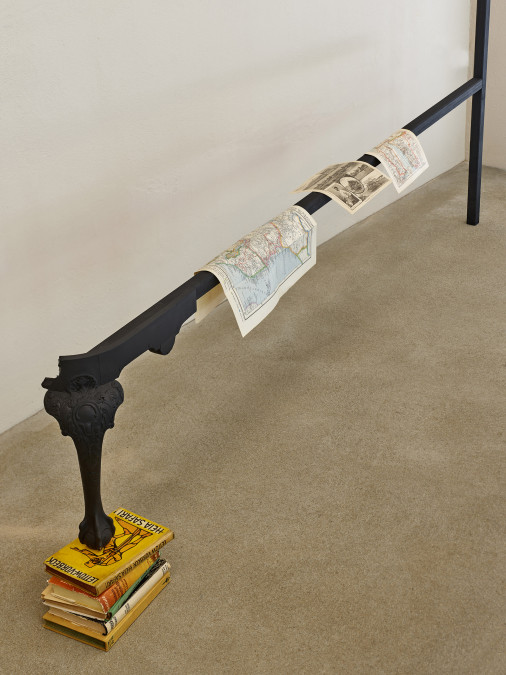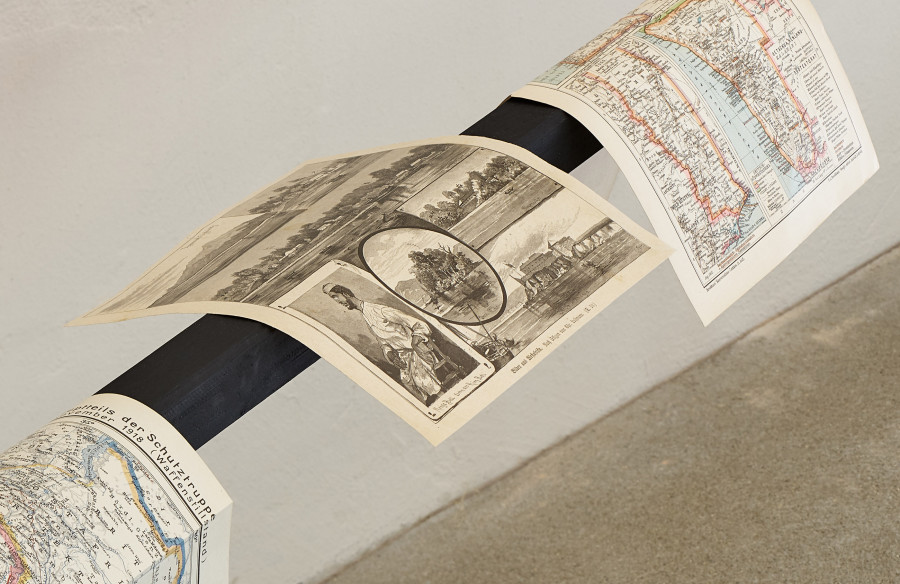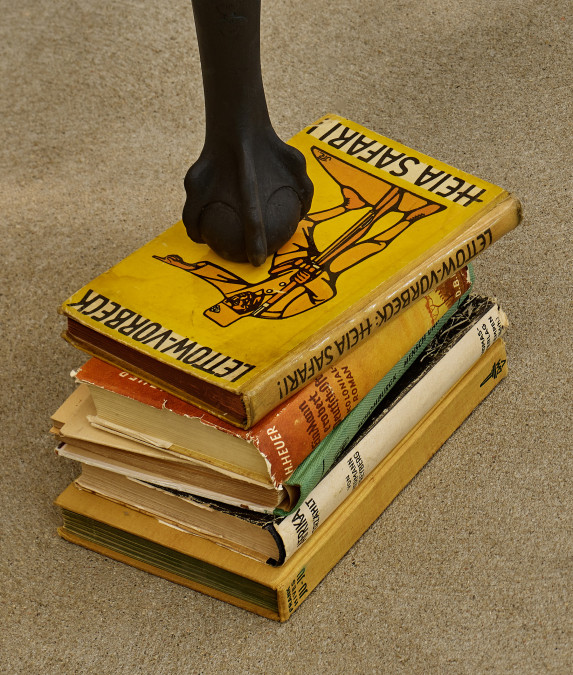Mungo bei Manga Bell Kamerun VII 1901 – General Müller – Kreaning, G.
2019
Installation views
Kunsthaus Dahlem, Berlin
Mungo at Manga Bell Cameroon VII 1901 -
General Müller - Kreaning, G.
The installation Manga Bell takes place in the context
of the exhibition Inspiration Africa- A Continent in the
Eye of 20th Century German Sculpture at the Kunsthaus.
Within a space- related wooden construction, among other objects,
a replica of an elephant skull from 1901, originally stored as a scientific trophy in the cellar of the Museum of Natural History in Berlin, is presented.
The archival signature on the original is used as a starting point for an associative sequence of objects that refer to the time when Cameroon, the country of origin of the skull, was a german colony.
Part of the installation are photographs by the artist Winfried Bullinger from his ongoing photo series An den Rändern der Macht (At the Margins of Power).
